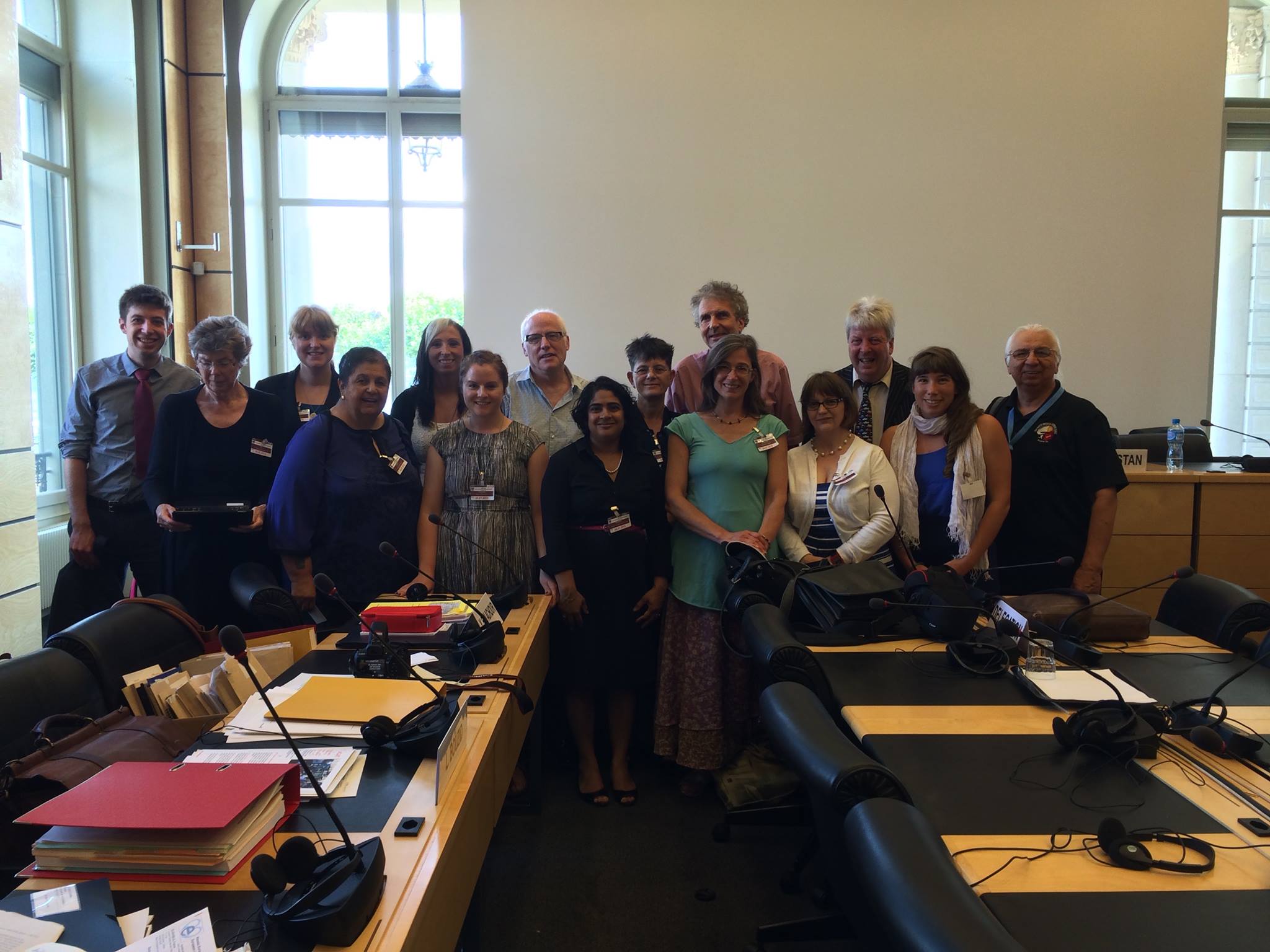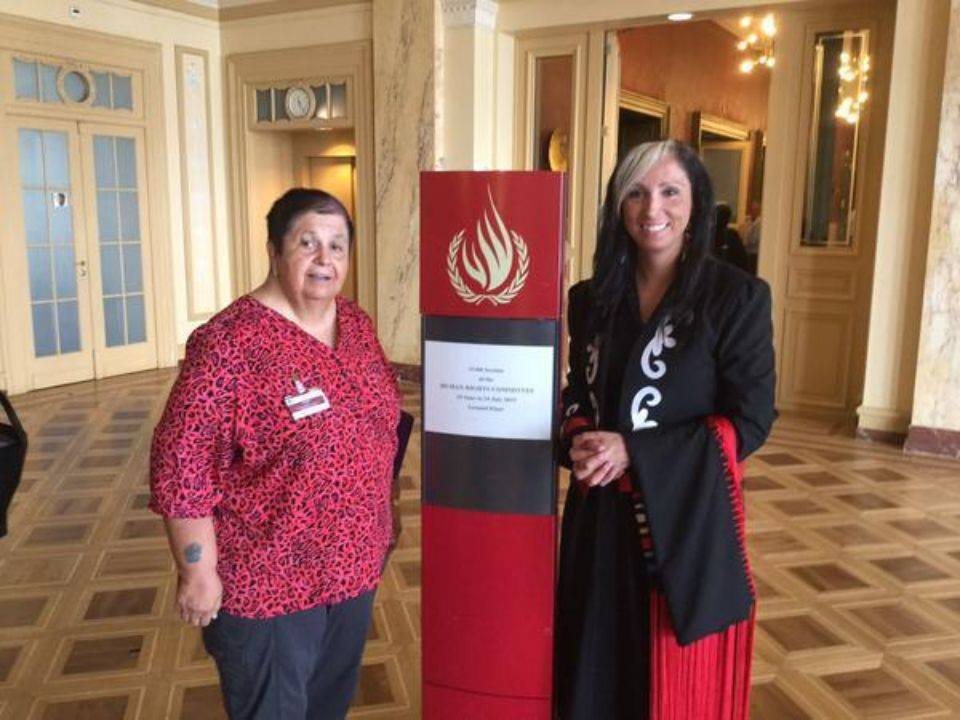Since Canada is now in full blown election mode, one issue that has been getting as much attention as the election itself is the question of whether or not First Nations should vote. Some advocates claim that if all “Aboriginal people” voted, they could influence as many as 50/338 ridings. Those against voting question those numbers but also challenge the claim that how we exercise our “power” is by voting. As for me, I choose not to vote and do not believe that we should rest our hope on a federal election any more than we should an Assembly of First Nations (AFN) election. The whole point of sovereignty is that Indigenous Nations must assert, live, and defend our sovereignty, jurisdiction, and right of self-determination – not vote for federal politicians to do that for us.
http://indigenousnationhood.blogspot.ca/2011/04/to-vote-or-not-to-vote-question-of.html
I have had many lively debates with my family and friends about this issue and have heard a wide range of perspectives from Chiefs, elders, and community members all over Canada and the United States. There is certainly no consensus on the issue of voting in federal, provincial or state elections, nor should one expect there to be. As diverse, sovereign Nations, with distinct cultures, laws, values, governing systems, and traditions, we should expect as wide a variety of opinions as there would be at the United Nations on any given issue. I have never looked at the issue of voting as right or wrong – it’s just that we all have different views about how best to advocate for our people. I don’t think we should vote – others think we should. It’s not lateral violence, disrespect, or a radical boycott to believe firmly in sovereignty and choose to withdraw from oppressive Canadian processes.
I firmly believe that the vast majority of our people who vote in elections or run as Members of Parliament do so with the best of intentions. They want the best for our people and see voting as an opportunity to get rid of the worst government this country has ever seen, or as a chance to vote for someone who is promising change. I look at heroes like the former MP Elijiah Harper who stopped the Meech Lake Accord, or current MP Romeo Saganash who worked on a bill to make the United Nations Declaration on the Rights of Indigenous Peoples l(UNDRIP) aw in Canada. Some of the most dedicated Indigenous activists whom I respect and admire also promote voting. This issue is not personal, nor should we allow it to be divisive. We owe it to each other to vehemently assert and defend strategic ways to advocate for our people – we just have different ideas about it.
I believe strongly in our sovereignty and right of self-determination as Indigenous Nations. The United Nations emphasizes that we not only have the right of self-determination, but that this includes the right to freely determine our political status. That means we choose how we want to relate to the Canadian state – as citizens, Nations or something else. It is internationally recognized law that citizens don’t sign treaties with their nation-states – treaties are reserved for Nation to Nation relations. Both the Royal Proclamation of 1763 (which is now constitutionally-protected) and the historical treaties recognize our status as Nations. When I think about how I want to be represented at the negotiation table with Canada, I would much rather engage in Nation to Nation negotiations than as a stakeholder, interest group, or ethnic minority Canadian citizen.
https://ricochet.media/en/534/first-nations-and-the-federal-election-an-exercise-in-self-termination
Being a Canadian citizen has historically meant giving up one’s Indigenous identity, culture, spirituality, traditions, customs, practices, connection to the land, community, and Nation. For a short period, this was a voluntary choice – but for the majority of history, this has been a choice made for us by often brutal means. Defending our lands in Mi’kmaw territory meant being scalped. Speaking our languages in residential schools meant beatings, starvation, and sometimes death. Giving life to new generations of our people meant forced sterilizations for our women or the theft of our children by the thousands into foster care. We were never advocating for citizenship and voting – we were advocating to protect our sovereignty, lands, and peoples. When my father fought in WWII, he did so as part of our treaty obligation to defend the lands and peoples – not to gain a vote in federal elections. Our treaties are with the Queen, not Harper.
http://ejournals.library.ualberta.ca/index.php/aps/article/view/22225
Even once Canadian citizenship and voting rights were forced on us in the 1960’s, these rights did not afford us equal protection of Canadian law or justice. We have an ongoing crisis of murdered and missing Indigenous women, over-representation of our people in prisons, the highest rate of children in care, and socio-economic indicators have declined over the last 25 years. Every federal and provincial government that has ever been in power has failed to address any of these urgent social issues, let alone recognize Aboriginal title or Aboriginal and treaty rights. Voting in the oppressor’s regime has, not surprisingly, failed to end oppression. Yet, those in power in Canada would have us believe that our power comes from voting for them – as if they represent our Nations.
http://www.theharperdecade.com/blog/2015/7/14/harpers-10-year-war-on-first-nations
This leads to a very important question about power. Where does our power as Indigenous Nations to make change come from? Is it federal recognition as “willing partners” or “good Indians”, Indian status cards, voter registration cards, or the election of an MP of your political choice? Surely if this was the source of our power, we really would have died off a long time ago – as was the original policy objective. But if I listen to all the elders, former activists, youth and leaders, I have to conclude that we never would have survived Canada’s elimination and assimilation policies if we did not have a firm commitment to our identities, cultures, and sovereignty as Nations. Even today, for those who vote – they are voting for which party will be our next Minister of Indian Affairs. The political players are really secondary considerations given the complex construct of laws and policies and economic structures that exist to deny us our basic human rights, let alone our Aboriginal and treaty rights.
http://tbinternet.ohchr.org/_layouts/treatybodyexternal/SessionDetails1.aspx?SessionID=899&Lang=en
Our greatest source of power has always been and always will be in our people. It is our collectives that have kept our Indigenous Nations strong, helped us survive these long dark winters under colonialism, and have offered the best hope of change for the future. The most exciting and transformative times in our recent history have not been tied to voting in federal elections, but were linked to our very public collective actions against Canadian processes. Take for example the nation-wide protests against the 1969 White Paper which set out to assimilate First Nations; the Constitution Express against the constitutional talks of the 1980’s which were set to exclude First Nations; and most recently with Idle No More against Harper’s suite of legislation intent on destroying the environment. The power of our people even inspired Canadians to work alongside us in solidarity to protect our lands and waters, and basic human rights. Unions, teachers, doctors, scientists, academics, lawyers, and other civil society groups have all joined forces to demand justice in Canada for all – including First Nations.
Canada’s last best hope at protecting our lands and waters for future generations rests with First Nations, not the other way around. First Nations voting in federal elections will not bring about the change we need. From the robo-call scandal, to changes in electoral rules to massive corporate infiltration of political parties – any concept of democracy in Canada is an illusion. Until the system is changed, voting in a corrupt system won’t bring about justice. That is why it is so important to this debate to focus on the facts – simply voting under a belief that it will solve these issues is not helpful. Some important clarifications:
(1) To say “If all Aboriginal people voted” is not possible or realistic. Not all Canadians vote, why would anyone assume all Indigenous people would?
(2) In Canada’s voting system you have to vote for an MP – you don’t actually vote for Prime Minister. This means, you would blindly vote for a political party, even if the MP him/herself was a crook. This has happened.
(3) Election laws have changed to make it harder to vote for First Nations.
(4) Electoral ridings have been changed for this election changing voter composition and number. Had the new ridings applied in last election, Conservatives would have gained 22 extra seats. Conservatives won the last election with 166 seats. For this election, they could lose 18 seats and still hold a majority government.
(5) There is no direct link between voting and the reduction in poor socio-economic outcomes for First Nations as claimed by National Chief Bellegarde. Harper’s Conservatives had some very prominent Indigenous MPs and a Senator who towed the assimilatory party line.
(6) Indigenous peoples are not apathetic. They have higher voter turn outs in their First Nation elections than Canadians do in their elections. Not voting in federal elections is not an issue of apathy or “lack of education” as National Chief Bellegarde claims.
(7) Justice for Indigenous peoples should never be tied to forcing our participation in Canadian political processes. Our Aboriginal and treaty rights are protected under international law and pre-exist Canadian laws and political parties.
That being said, I agree that the “Stalinesque” Prime Minister Harper must go. The situation is so critical in Canada that if he is not removed now, he could continue to do irreparable harm to Canada – which is bad for all of us. I understand the urgent call for everyone who possibly can vote, to vote out Harper. I think we can all agree that getting rid of Harper is one of the most important things Canadians can do to save their democratic institutions. . Harper is, after all, enacting unconstitutional laws, selling natural resources to foreign countries, and committing grave injustices and human rights abuses in our territories. As treaty signatories, we committed to protecting settlers from harm. Some of us feel that we have an obligation to act – the only difference of opinion is what that action should look like.
I would never tell someone not to vote, nor would I tell them not to run for a position as MP. I’m just saying that I won’t do that and if someone asked me what they should do, I would tell them that the best place to put all our energy is into our Nations. We should use all our education, skills, experience, knowledge, time, money and energy into advocating for our people, supporting our activists and leaders, healing our illnesses, rebuilding our communities, protecting our cultures and identities, defending the health of our lands and waters, and strengthening our Nations.
Some Indigenous peoples believe that voting is the best way to address Harper’s frightening dictatorial regime, while others believe that resisting and withdrawing from Canada’s oppressive processes and strengthening our Nations is a better focus for our energy. That debate won’t be settled any time soon, and that’s okay. I think most of us can agree that the power of our people working in solidarity together – Canadians and First Nations – can force the changes we need to turn this ship around and restore justice in Canada for the benefit of our current and future generations. My actions don’t include voting, but I stand in solidarity with First Nations and civil society groups who are calling on Canadians to vote out Harper and demand better of whatever political party succeeds.

